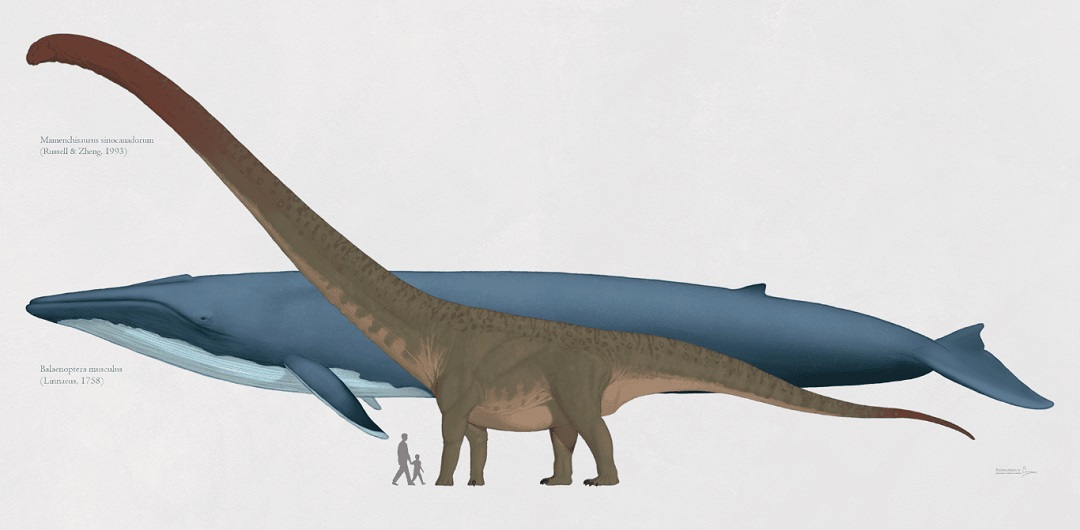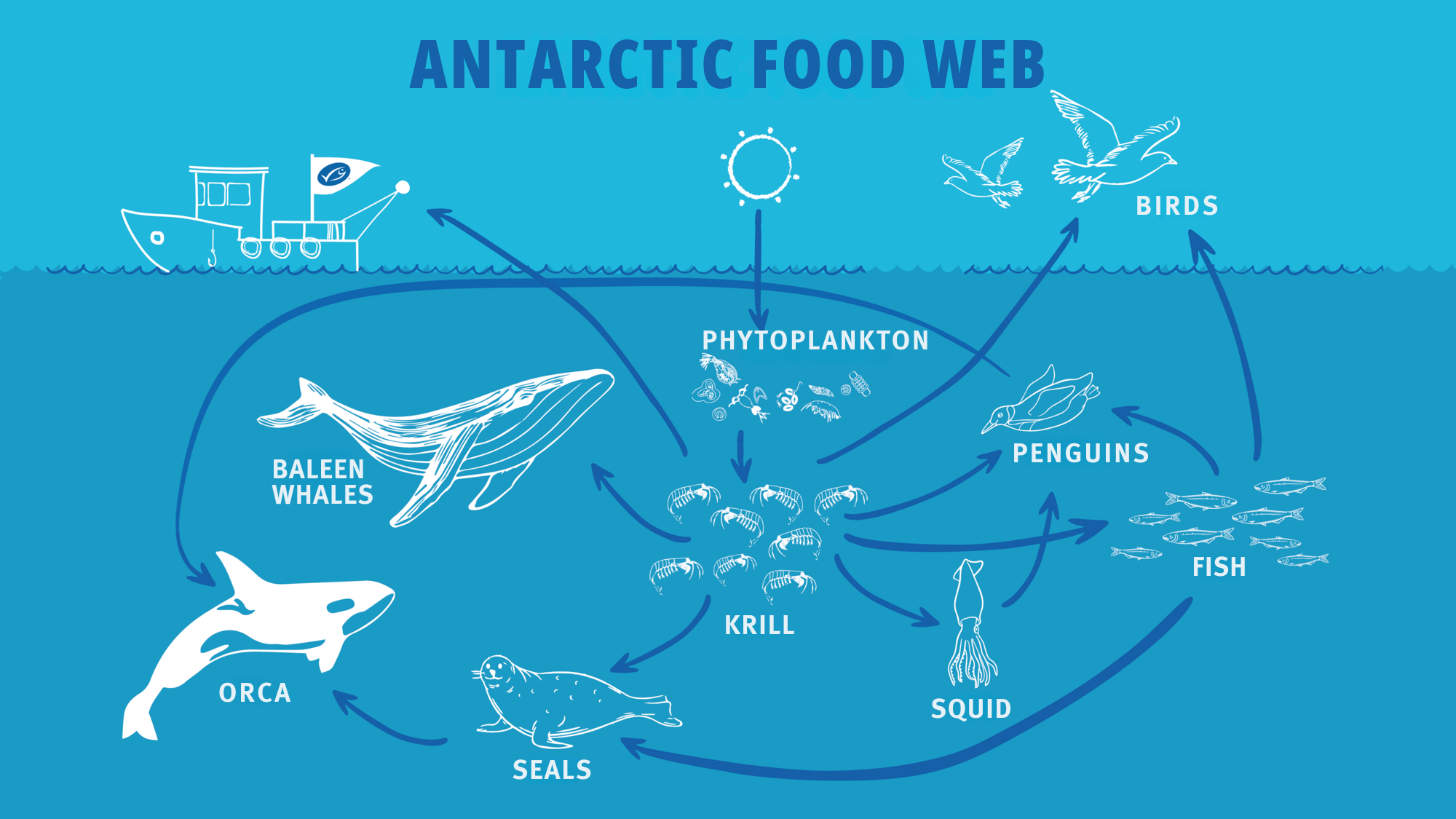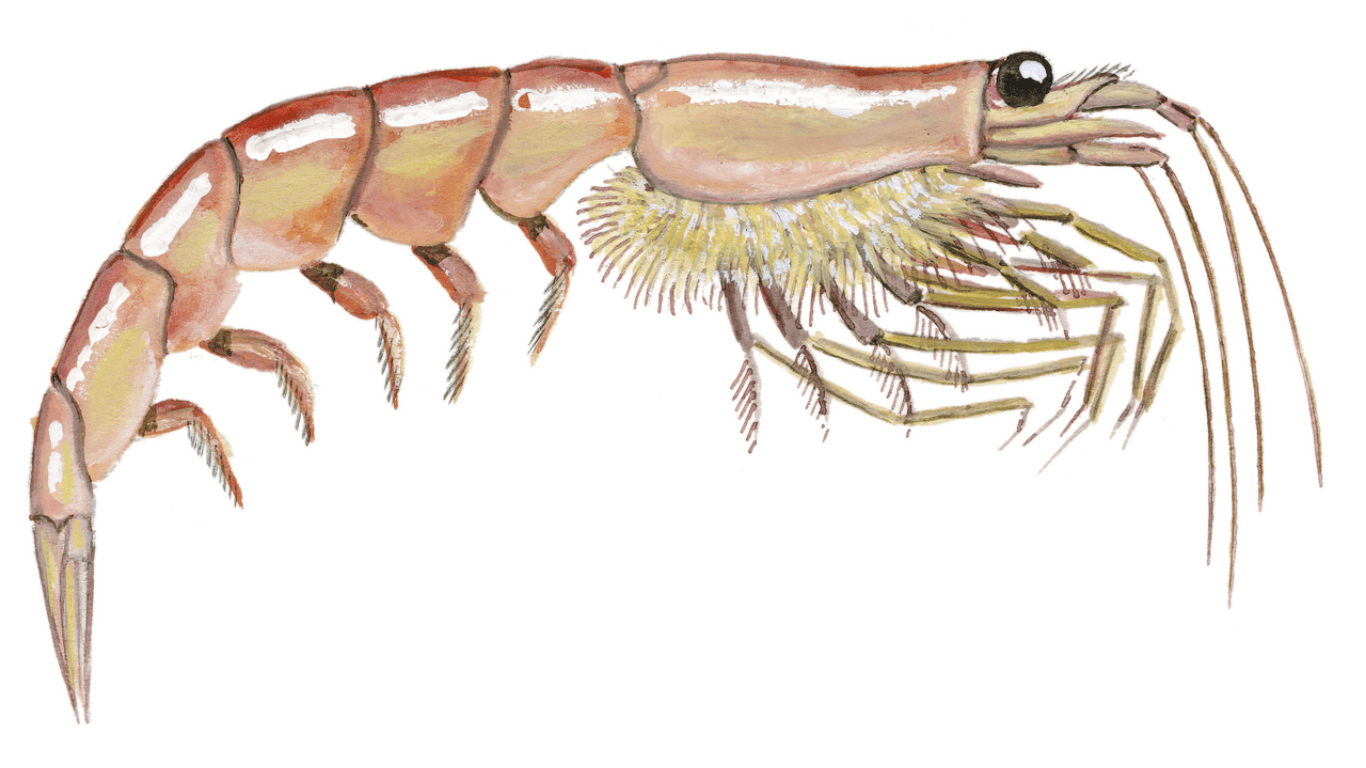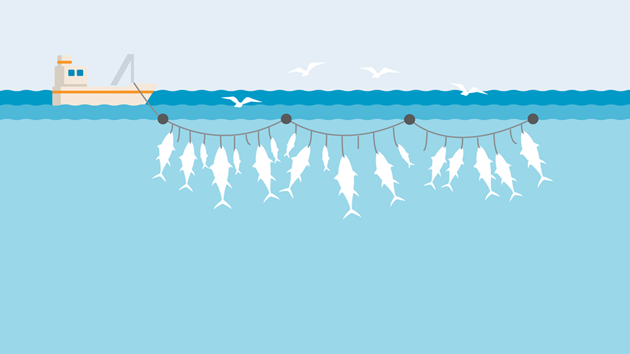Did you know: the blue whale is the biggest animal that's ever lived. Yes, even bigger than any dinosaur you might be picturing! They grow to an average of 80-90 feet and 200,000-300,000 pounds, which is about as heavy as an empty Boeing 787 Dreamliner.
 Image © paleoalberca
Image © paleoalberca
And in a fascinating turn of evolutionary events, its main food source is barely the size of an air pod case. Krill!
So, that means that a blue whale has to eat a lot of krill to fuel its body. One blue whale can eat 12,000 pounds of krill a day. That might sound like a lot, but it’s only a teeny, tiny fraction of the population. There is estimated to be about 300 million metric tons of krill in the Southern Ocean.
To help you better visualize the scale, may I suggest this delightful clip from Happy Feet 2?
Antarctic krill may be small (about 6cm/2.4in and 1g), but they form superswarms so big (like the one animated above) they can be seen from space—tens of miles wide and nearly as deep as a football field is long. And there's so many of them in the ocean that if they all lined up head to tail, they could circle the Earth a million times.
The sheer volume of krill is important because blue whales aren't the only ones eating krill. They're also prey for other creatures in the Antarctic food chain, like seals, penguins, seabirds, and fin fishes.

And did you know that people eat krill, too? Not directly – their size means they wouldn't make for a good shrimp cocktail – but there is a big commercial krill fishery for nutritional supplements, since krill is packed with omega-3 fatty acids and antioxidants that can contribute to a healthy heart, brain, and immune system.
But since krill are so important to the Antarctic ecosystem, it's extra important that the fishery is managed extremely carefully.
In fact, the MSC Fisheries Standard has specific requirements for assessing the sustainability of keystone species, like krill. There are three MSC certified krill fisheries, and all three are in compliance with not only MSC regulations, but also those set by the international management body that protects resources in the Antarctic, the Commission for the Conservation of Antarctic Marine Living Resources (CCAMLR).
Some of these regulations include 100% observer coverage on all fishing vessels, minimizing the areas where fishing can occur, and an extremely low fishing quota (just 1% of krill biomass).
These fisheries invest in scientific research, gear innovation, and international cooperation, continually demonstrating their dedication to environmental sustainability.
To learn more about how CCAMLR manages krill fishing, take a look at this post: Is Antarctic Krill Sustainable?




